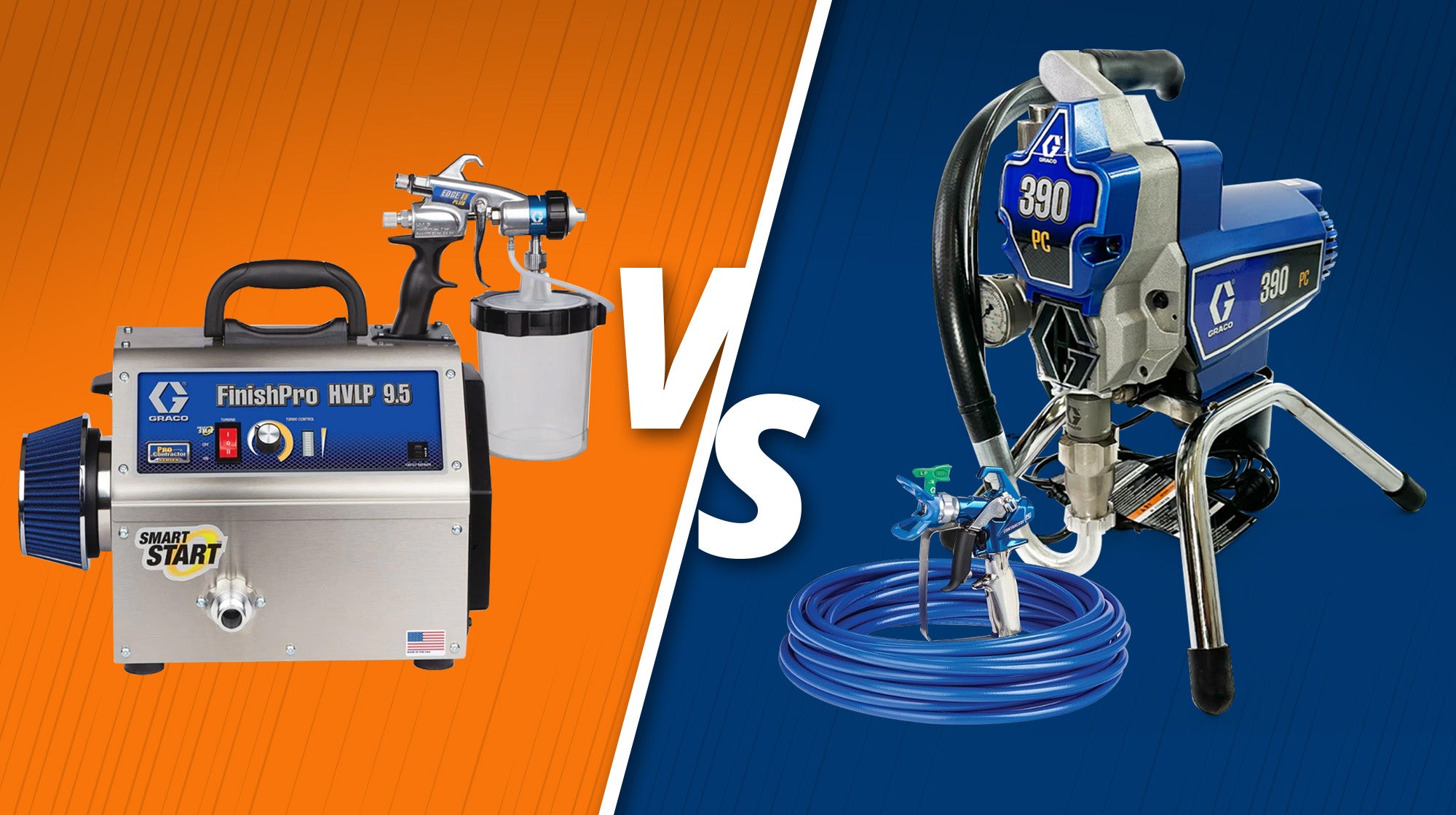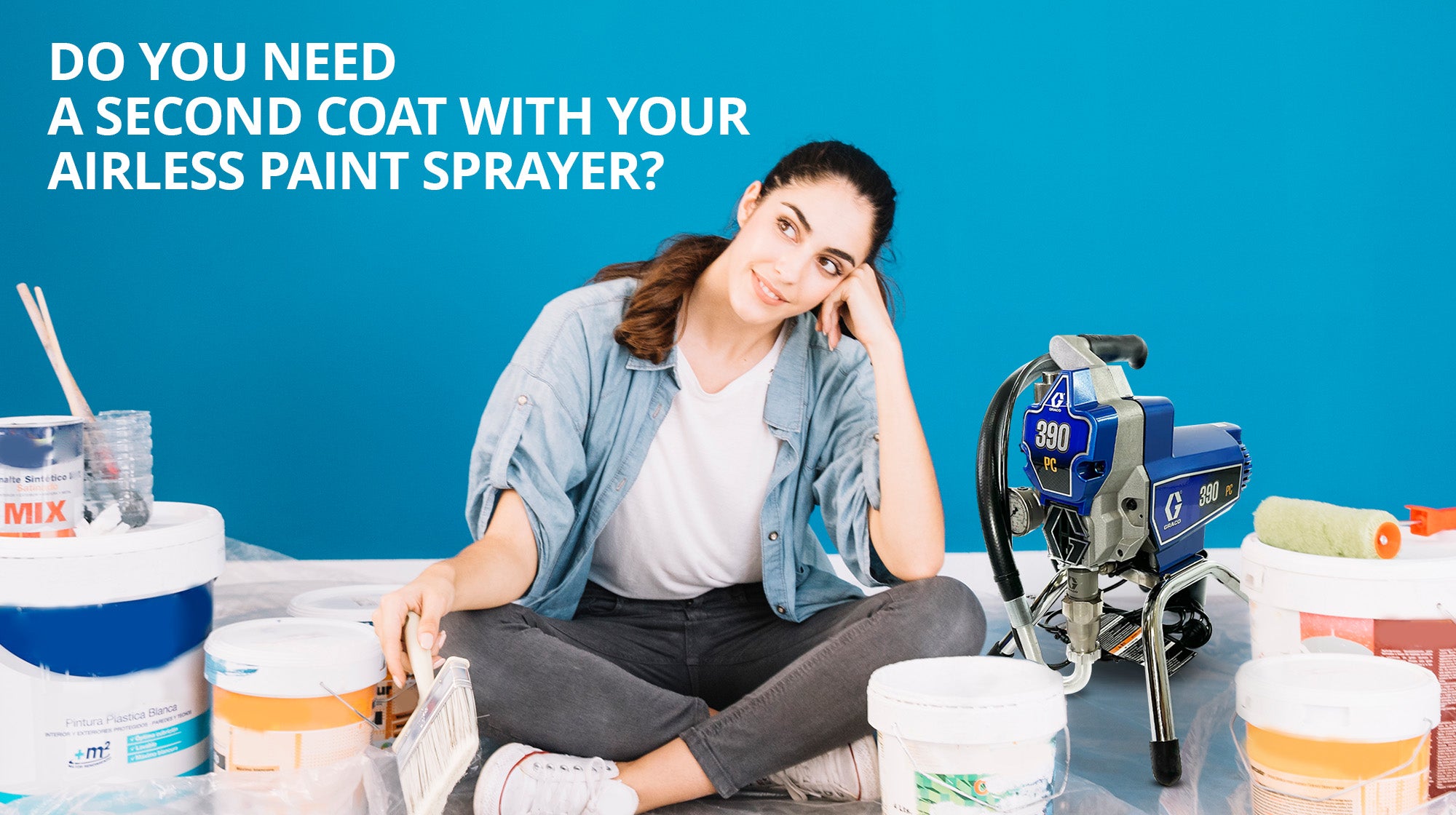What kind of paint do you use in a paint sprayer?
The tedious process of painting your house with traditional painting tools like brushes and rollers can leave you feeling drained and demotivated. Enter the revolutionary invention of paint sprayers!
By simply squeezing the trigger this remarkable device can distribute an even coat of paint in no time at all.
In basic terms—a paint sprayer is a tool that applies an even layer of fine paint mist across surfaces through its spray nozzle. Though it may not be common in your homes today, it could soon be your new best friend for any future professional painting and DIY paint projects.
What’s more, a paint spray gun effectively covers uneven surfaces with ease.
A paint sprayer can use paints that are applicable for spraying. Wooden furniture and cars as well as vinyl or aluminium house siding and walls can all be painted.
It's possible to use every paint type in a paint sprayer as long as you've got the right paint spray gun. Latex and water-based paints are among the most used paints in any paint sprayer. Other paints used include acrylic, primers, vinyl, alkyd, lacquer, enamel, high-heat paints, oil-based paints epoxy and rust-preventive paints.
Which type of Paint Sprayer suits you best?

Although there are numerous types available — from pneumatic to airless to HVLP (high volume low pressure)—deciding which one caters best for your needs may initially seem overwhelming at first but Paint Access has you covered with the best selection in Australia!
Airless paint sprayers
In airless paint sprayers, an electric pump is used for the painting instead of an air compressor. This type puts out the most paint at one time because the paint never mixes with the air. Airless paint sprayers are a perfect choice if you want to paint your fences or home exteriors.
Professional painting companies in Australia favour airless paint sprayers because of their quick coverage of large spaces. Cleaning airless paint sprayers is typically straightforward.
Check out our blog for helpful tips on selecting the right paint sprayer and how many multiple coats of paint you should apply. We'll make sure you get the best results with minimal effort.
Pneumatic paint sprayers
Pneumatic paint sprayers use compressed air to spray the paint. Mixing air and paint in a high-pressure stream makes these sprayers typically the easiest type for beginners to use. Nevertheless, they may cost more than other sprayer varieties.
A fairly even coat can be achieved with little practice when applying the paint. Ensure you comprehend how the sprayer works by testing it out on scrap pieces regularly.
Smaller projects like furniture or cabinets can benefit from using these sprayers.
High velocity/low pressure (HVLP) paint sprayers
Another cost-effective option for airless systems is HVLP paint sprayers for homeowners seeking alternatives.
Mixing air with your paint like pneumatic systems do is how these sprayers atomise and spray the paint. These alternatives utilise lower pressure levels making them less risky and more hygienic to operate compared to pneumatics.
For small to medium interior projects, HVLP sprayers are an incredibly versatile option.
Which is the best paint for airless paint sprayers?
According to painting professionals in Australia, excellent airless painting results are achieved using acrylic and latex paints.
Paint spraying via an air-assisted machine involves spraying paint through compressed air, allowing for quicker drying. This also assists in diminishing overspray. The nozzle could clog quite often if the paint is not properly diluted which is a disadvantage.
Does airless sprayer waste paint?
Airless paint spraying produces great results but is inherently wasteful due to atomising the paint into tiny droplets, many of which drift away.
Additionally, any paint remaining in the hose must be cleared out of the system and cannot be reused. A gallon of paint will generally cover between 150 to 200 square feet of wall space, so it's advisable to overestimate for an optimal outcome when painting with a paint sprayer.
How to use an airless paint sprayer for fine finishes?
Airless painting spray guns offer an incredible production rate and are ideal for spray-coating high-viscosity substances. For enhanced control, however, they require slight adjustments to achieve a finer finish.
Airless paint sprayers, possess exceptional quality in fast application of heavy-bodied coatings.
To accomplish a more improved look, despite being primarily intended for higher production and less fine atomisation, airless sprayers can still achieve a fine finish.
You just need to modify your airless paint sprayer to apply fine finishes properly.
1 – Changing the Airless Tip – As the first adjustment, you can change the spray tip in an airless paint sprayer to achieve a smoother finish. Standard airless tips are not meant for achieving fine break up, but fine finish airless tips are used instead.
2 – Modifying your airless to an air-assist airless - Airless and Air Assist Airless Paint Sprayers handle coating atomisation differently. Air Assist Airless offers a finish similar to what you would get with HVLP spraying, while regular airless sprayers cannot achieve the same level of atomisation. If you have an airless sprayer pump and are looking for more effective atomisation, you may want to consider converting it into an air assist airless system.
3 – A combination of fine finish tip and air assist airless - If you want to improve your paint finish even more, a combination of fine finish tip with an air assist airless spray gun can do the trick in providing a finish that will be as fine of quality as is provided with airless spray guns.
Do you need a second coat with your airless paint sprayer?

If you are painting with traditional painting tools such as a paint brush or a paint roller, two paint coats are an absolute necessary to build up the correct mil thickness.
However, with an airless paint sprayer, you see results with just one paint coat spray. This is because the airless paint sprayer creates droplets of paint which then ‘splash’ out on your wall.
Moreover, one slow horizontal paint sprayer pass at 10 -12 inches is equal to swiping 3 – 4 passes with a paint brush or a roller.
In simple terms, meaning you are saving around 15-30 seconds on each pass you make with a paint sprayer, when compared with a paint brush or roller swipe.Furthermore, more quantities of paint is utilised, if you choose an airless paint sprayer rather rollers or paint brushes.
For DIY painters who are looking for an efficient paint option, HVLP is perfect since it uses minimal amounts of paint. When using an HVLP system you'll use 20% or so more paint When you use an airless paint sprayer you can expect it to consume around 40 -50% more paint.
It takes an average of 1–2 hours for the paint to dry before another layer of spray paint can be applied under ideal temperature conditions, ranging from about 65 to 80 degrees.
Make sure your paint has dried sufficiently for additional coats by conducting a test in a hidden area.
Before using any airless paint sprayer for painting, make sure to take precautions to prevent unwanted splatters on other surfaces. This is achieved by properly masking off unprotected areas and covering nearby furniture with tarps or plastic sheeting.It’s also important to note how airless paint sprayers work, so you can choose an appropriate tip size accordingly. Depending on the viscosity of your paint you'll need a tip with a certain size opening; smaller openings work best for thin substances like lacquer while larger ones are needed for latex paints. Remember these recommended tip sizes when selecting your spray gun:
1 - Stains, water sealers and lacquers – 0.0009 – 0.013
2 - Enamel paint – 0.013 – 0.15
3 - Oil or latex paints – 0.15 and up.
Lastly, be mindful of your surroundings when painting outdoors.
The wind can easily carry tiny paint droplets great distances causing unwanted splatters on other surfaces.
Don't neglect cleaning up immediately after spraying; dried paint is a formidable foe in any paint job.
With PaintAccess, you can be sure that your walls will look their best in no time!
Unfamiliar with renting or buying a paint sprayer?
PaintAccess has got you covered with more details in the link below:
https://www.paintaccess.com.au/blogs/company-news/airless-paint-sprayer-buy-or-rent
Is it OK to leave paint in my airless paint sprayer overnight?

According to professional painting experts, leaving paint in your airless sprayer for a day and/or even overnight if you are using it the following day is fine.
However, if you are finished spraying, clean it well and prepare it for storage.
The experts at PaintAccess want you to keep in mind a few things if you are considering leaving paint in your sprayer.
- Drop the pressure.
- Turn your tip halfway (stops yip from drying).
- Put your Intake tube & dump tube into a bucket of water.
- Put a lid back on your paint.
- Place the gun in a bucket of water (overnight).
But don’t do this for prolonged periods as you could damage your machine and warranty. But overnight or a few hours will be fine.
How to thin paint for different types of paint sprayers?
- HVLP (High Volume, Low Pressure) Paint Gun is great for oil-based paint spraying.
- To use with latex paints, the paint needs to be thinned out with water.
- For HVLP paint thinning, start by adding 10% water and add more until the desired consistency is achieved.
- A paint conditioner can also be added to water-based paints to help them spray more easily.
- Always strain the paint before spraying using a cone-shaped strainer.
- Using a turbine system can warm the paint, which can reduce drying time and make the paint thicker.
- Use a longer hose from the turbine to the spray gun to prevent the paint from getting thicker.
- Airless spray guns work well with latex paints.
- Larger systems are fine for un-thinned paint, but smaller systems may require thinned paint.
- To thin paint for airless spray guns, use 20% water for optimal spraying.
- No need to thin oil-based paint before application with airless systems.
Paint Access’s PRO tips for paint thinning for spray guns
- To measure paint accurately, use a viscosity cup as the cup acts as a funnel, helping to keep the viscosity in check.
- Always start with ½ cup of paint.
- Use ½ cup of water for thinning water-based or latex paints.
- Stir thoroughly until you reach your desired consistency.
- Make sure that the paint pours thoroughly, evenly and smoothly.
- Always use another surface to test the paint.
- Always wear protective gear as paints are toxic.
- Acrylic and latex paints work well for airless painting systems.
FAQ
1 – Can I use Dulux Weathershield in a spray gun?
Yes! You can use Dulux Weathershield in all our top selections of spray guns.
2 - How do I get a smooth finish with an airless sprayer?
You can include a fine finish tip with an air-assist airless spray gun which provides a finish that will be just as fine of quality as is provided with air spray guns.
3 - Can my paint be too thick for an airless sprayer?
If your paint is too thick, add an additional 1/8 cup of water (30 ml) per gallon (3.8 litres) of water and mix.
4 - Can I use Dulux paints in my airless paint sprayer?
Dulux makes ‘satinwood’ paints. These paints would spray through our HVLP spray paint guns but again would require thinning. You would need to thin the paint to a single cream consistency, and you may need a number of coats to get good coverage.
